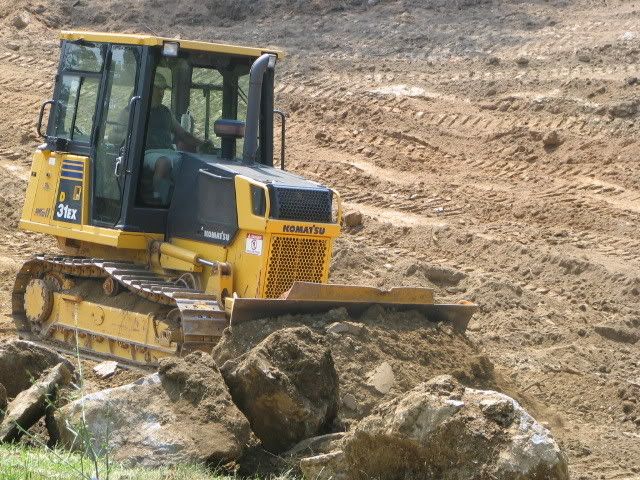The next phase was to remove overburden in the basin, get to the good clay, and mix it in with some decent dirt for building up the dam. Again, the dozer did a great job on this step as well:



There were a lot of very large stones/boulders, but only on the east side of the basin. I began to suspect that some of the stones were the foundation remains of an old structure. This assumption would later prove correct. Anyway, the dozer moved them up and out of the way with no problem:

The basin, etc. begins to shape up nice. I was surprised to not only find an abundance of clay, but also by the different states it was in within such a close vicinity to one another. For example, I found one strip that looked pure grey and was in wet plastic form--it was a very specific vein. Right beside it, where the ground had been open to the elements from the season water running through, that very same clay had hardened into shale. In the midst of this you would find the same clay in the form of large hardened folds of rock. It really was quite fascinating.


